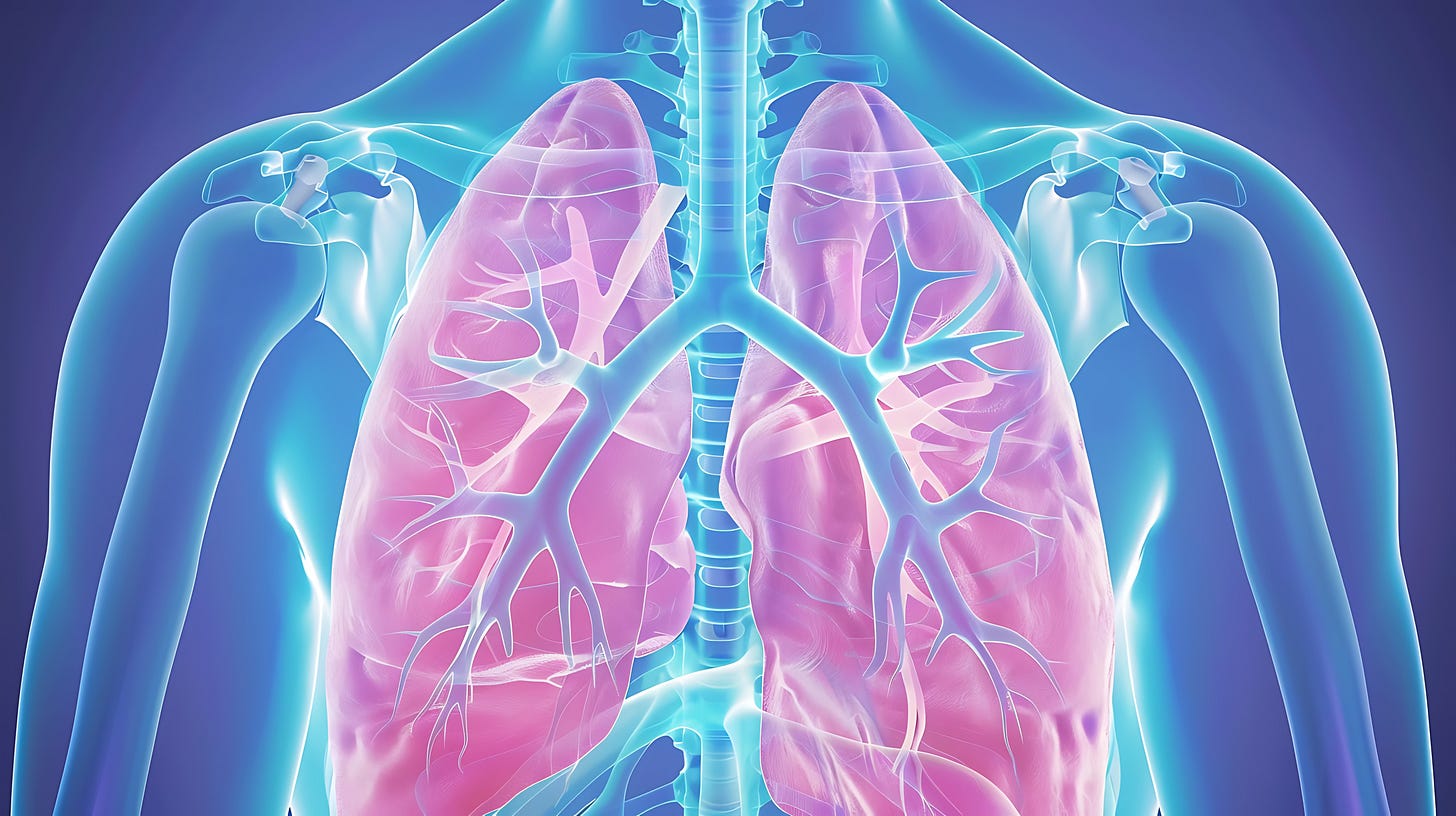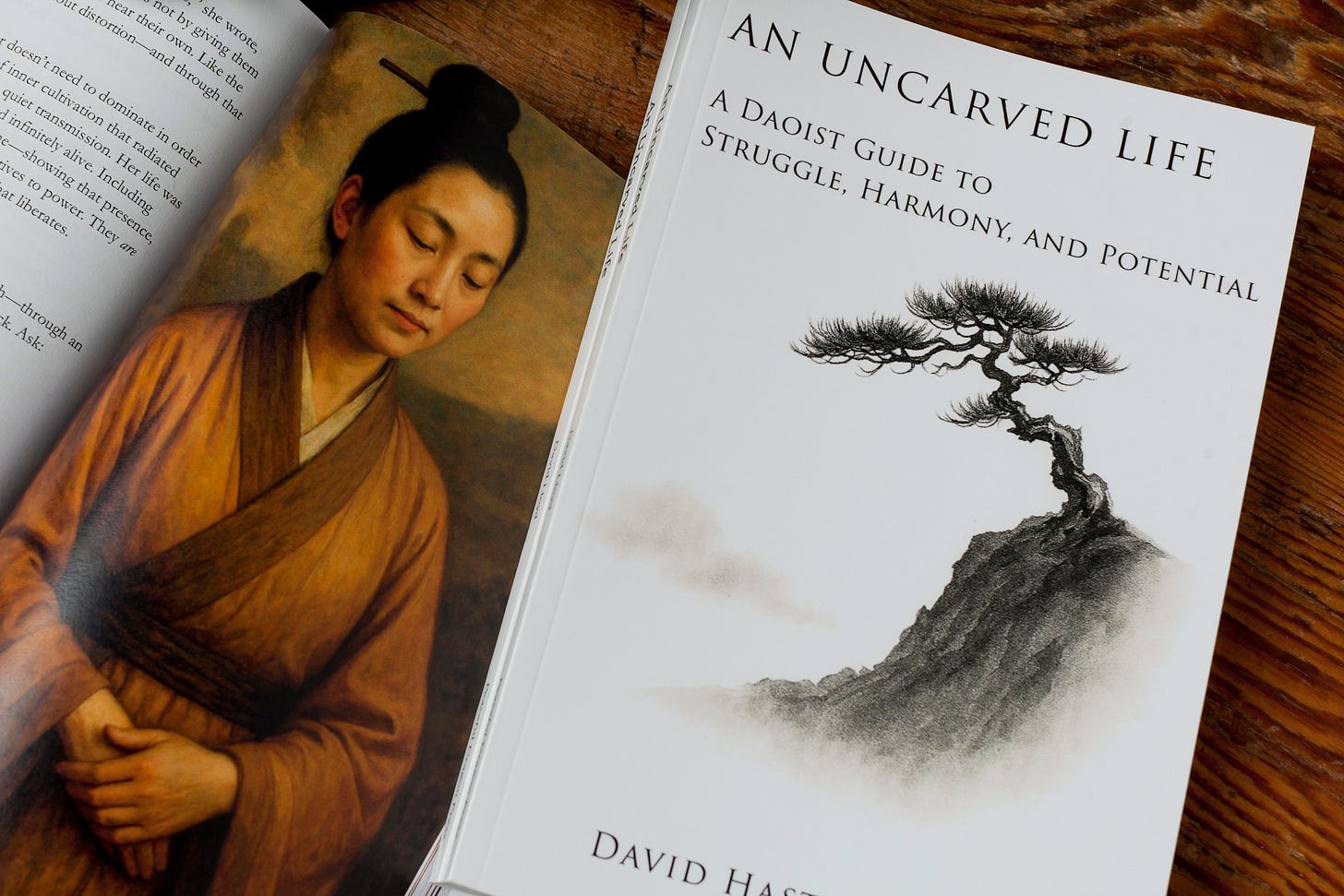Peer-Reviewed Research: Qigong and Lung Function
How Health Qigong Helps People with COPD
Chronic obstructive pulmonary disease, or COPD, is a condition that makes breathing difficult and everyday activities exhausting. Even after completing a structured pulmonary rehabilitation program (PRP)—the gold standard for improving lung health—many patients find that their progress fades within six months. The study you’re about to read offers an inspiring alternative rooted in ancient Chinese practice: Health Qigong.
Why This Study Matters
Researchers from the Hong Kong Polytechnic University and Kowloon Hospital wanted to see if a traditional “mind–body” exercise could help patients maintain the benefits of pulmonary rehabilitation. Their reasoning was simple: walking or weight training often feels burdensome for older adults with COPD, but Qigong is gentle, culturally familiar, and easy to perform indoors.
The team hypothesized that a specific form called Baduanjin (八段錦, “Eight Pieces of Brocade”), when practiced regularly at home, could sustain or even enhance the physical and psychosocial improvements gained during rehabilitation.
The Design: A Real Clinical Test
This was a randomized controlled trial (RCT)—the gold standard for medical research—conducted in Hong Kong. Eighty patients with medically confirmed COPD were randomly assigned to one of two groups:
Health Qigong group (HQG): received four 45-minute sessions of Baduanjin training, plus a take-home video and daily logbook.
Control group: received extra instruction in breathing and walking exercises, plus a similar audiovisual guide.
Both groups completed the standard hospital PRP, and both were encouraged to continue daily exercise for six months after discharge. Assessments were done at four points—before the study, after the PRP, and at three- and six-month follow-ups—by blinded assessors who didn’t know which patients were in which group.
Measuring Health in Motion
The researchers wanted to know whether Health Qigong could help preserve functional capacity and quality of life (QOL).
Primary outcomes measured physical ability using:
The six-minute walk test (6MWT)—how far a person can walk in six minutes.
The Monitored Functional Task Evaluation (MFTE)—a scale of daily living abilities specific to COPD.
Secondary outcomes examined psychosocial health using:
The 36-Item Short Form Health Survey (SF-36), focusing on general and mental health.
The Chinese Chronic Respiratory Questionnaire (CCRQ), assessing dyspnea (breathlessness), fatigue, emotion, and sense of mastery.
Who Participated?
The participants were mostly men in their early seventies with moderate to severe COPD. All had stopped smoking at least six months earlier and had no prior experience with Qigong. Importantly, both groups were comparable in age, disease severity, and baseline scores, ensuring a fair comparison.
Practicing the Breath of Life
The Baduanjin routine includes eight movements combining slow, coordinated motion, natural breathing, and focused attention. To make it suitable for COPD patients, an expert panel recommended several modifications:
Pay attention to perceived exertion—never exceed a moderate level of breathlessness.
Use natural breathing, with optional pursed-lip breathing if needed.
Move within a comfortable range, allowing gentle stretching but avoiding strain.
Rest when necessary.
Gradually progress from easier routines to the full sequence.
Patients were encouraged to practice once a day, at least four times per week for six months.
Results: The Numbers Behind the Breath
After six months, the differences were clear—especially among those who consistently practiced.
Functional Capacity
In the per-protocol analysis (looking only at patients who followed the program as prescribed):
Health Qigong practitioners improved their six-minute walk distance by an average of 55 meters, compared to only 7 meters in the control group.
They also showed significant gains in daily functional ability (MFTE scores increased by nearly two points versus almost no change in controls).
These differences were statistically significant, meaning they were unlikely to be due to chance.
Quality of Life
Quality-of-life scores told a similar story. The General Health subscale of the SF-36 improved by 9 points in the Qigong group but dropped by 3.5 points in the control group. Mental health and emotional well-being also trended upward, though not all reached statistical significance.
In contrast, patients in the control group began to lose ground between the three- and six-month follow-ups—suggesting that the initial rehabilitation benefits were fading.
Compliance Matters
Not everyone kept up the daily routine. About 18 percent of Qigong participants stopped practicing after discharge, mainly because they forgot the movements or didn’t use the instructional video. Interestingly, these “non-compliant” participants showed the same limited progress as the control group, emphasizing that the benefits depended on consistent practice.
The Bigger Picture: Why Qigong Works
The researchers proposed several mechanisms that may explain Qigong’s positive impact on COPD:
Gentle, low-intensity movement
Unlike high-intensity workouts, which can trigger breathlessness or muscle wasting in COPD patients, Qigong’s slow rhythm keeps effort within a safe range—roughly 1.5 to 2.6 METs, or about 40–50 percent of maximum heart rate.Improved respiratory efficiency
The integration of slow, mindful breathing enhances respiratory sinus arrhythmia—a natural synchronization between heartbeat and breath—leading to better gas exchange and more efficient oxygen use.Enhanced circulation
Coordinated breathing and muscle contractions stimulate the respiratory muscle pump, improving venous return and overall blood flow.Anti-inflammatory effects
Gentle repetitive motion may regulate immune signaling molecules like interleukin-6, helping to reduce systemic inflammation—a key factor in COPD progression.Mind–body connection
The meditative aspect of Qigong induces specific brain-wave patterns associated with calmness and positive mood. Prior studies have linked these changes to better immune function and reduced stress.
Together, these mechanisms suggest that Qigong’s benefits are systemic, influencing both body and mind. The authors called for future studies measuring biological markers such as C-reactive protein and tumor necrosis factor-α to confirm the anti-inflammatory hypothesis.
Lessons Learned and Study Limitations
Like all good science, this study also acknowledged its limitations.
Gender imbalance: Over 90 percent of participants were men, reflecting local demographics but limiting generalization to women.
High attrition: Around 30 percent of participants in both groups dropped out—mainly due to illness or frailty.
Short training exposure: Only four in-person sessions may have been insufficient for some older adults to master the routine. Longer coaching might improve adherence.
Cultural context: Because most participants were Chinese and already held positive views toward traditional practices, results might differ in Western populations less familiar with Qigong.
Nevertheless, these limitations don’t diminish the significance of the findings—they highlight opportunities for refining future research.
Re-imagining Rehabilitation
This trial’s greatest contribution is its demonstration that ancient practices can have measurable modern benefits. Qigong doesn’t replace medical treatment or pulmonary rehabilitation; rather, it complements them. By offering a gentle, enjoyable, and culturally meaningful form of home exercise, it helps patients maintain what they’ve worked so hard to achieve.
Imagine an elderly man in Hong Kong who just completed his hospital rehabilitation. Instead of reverting to sedentary habits, he begins each morning with a quiet Baduanjin session—arms lifting like clouds, breath deep and steady. Over months, his walking distance improves, his fatigue lessens, and he feels a sense of mastery returning. That’s the power of integrating movement, breath, and intention.
Implications for Practice
For clinicians and rehabilitation specialists, this study offers a practical takeaway:
Incorporate Health Qigong as a home-based follow-up program for COPD patients after discharge.
Provide sufficient training and supervision at the outset—perhaps six to eight sessions—to ensure patients can practice safely and confidently.
Monitor compliance through logbooks or community classes to sustain motivation.
Encourage mindfulness during practice to harness the psychological benefits that accompany physical improvement.
As global interest in integrative medicine grows, Qigong may bridge the gap between physical therapy and meditation, offering a holistic path to healing.
A Return to Harmony
Traditional Chinese Medicine teaches that disease arises when the body’s Qi (氣)—its vital energy—becomes stagnant or imbalanced. In COPD, breath itself becomes constrained, mirroring the stagnation of Qi in the lungs. By aligning movement, breath, and awareness, Health Qigong seeks to restore harmony where the flow has been blocked.
From a biomedical standpoint, we might call this enhancing oxygen efficiency and neuro-immune balance; from a Daoist perspective, it is simply returning to the natural rhythm of life. The language differs, but the outcome is the same: greater vitality, steadier breath, and a calmer mind.
Looking Forward
The study authors concluded that Health Qigong shows significant promise as an adjunct therapy for COPD rehabilitation. They advocate for larger trials including both genders, younger participants, and non-Chinese populations, as well as studies measuring inflammatory markers to illuminate the physiological mechanisms at play.
As awareness of Qigong spreads beyond Asia, its integration into Western pulmonary rehabilitation programs could offer a low-cost, low-risk strategy to improve patient outcomes. After all, breathing practice transcends culture—it’s the most fundamental act of being alive.
Final Thoughts
What this research demonstrates is not merely an improvement in walking distance or questionnaire scores—it reveals something deeper: that mindful movement can transform the experience of illness. For patients with COPD, Health Qigong provides a gentle yet powerful way to reclaim agency over their own healing process.
Breath by breath, step by step, the ancient wisdom of Qigong reminds us that even in chronic disease, life can move freely again.
Reference (APA 7th edition)
Ng, B. H. P., Tsang, H. W. H., Jones, A. Y. M., So, C. T., & Mok, T. Y. W. (2011). Functional and psychosocial effects of health Qigong in patients with COPD: A randomized controlled trial. Journal of Alternative and Complementary Medicine, 17(3), 243–251
Like what you read? Keep exploring…
If this post resonated with you, you’ll love my book:
An Uncarved Life: A Daoist Guide to Struggle, Harmony, and Potential
This book blends timeless Daoist wisdom with real-world insight into how we can navigate struggle, cultivate inner peace, and live in alignment with our deeper potential. Drawing from classical texts like the Dao De Jing and integrating modern psychology and neuroscience, An Uncarved Life offers a grounded, poetic, and deeply personal guide to living well in a chaotic world.
Whether you’re seeking clarity, calm, or a more meaningful path forward, this book is a companion for anyone who wants to walk the Way with sincerity and strength.
Available now in print, Kindle, and audiobook formats.
Click here to get your copy on Amazon



